1. No Left-Handed Writing Allowed

Back in the day, if you were a lefty, your teacher might have forced you to switch hands. It sounds ridiculous now, but for a long time, being left-handed was considered wrong or even a sign of misbehavior. Some teachers would smack students’ hands with a ruler if they tried to write with their left hand, while others forced kids to sit on their left hand until they got used to using their right. The reasoning? It was seen as improper, and some even believed left-handedness was linked to bad character. Imagine the frustration of trying to write naturally but being forced to do it in the most uncomfortable way possible. It wasn’t just inconvenient—it could mess up a kid’s handwriting for life. This rule didn’t fully disappear until the ‘70s in some schools, and even then, left-handed kids sometimes got weird looks. Today, we know that handedness is just a natural trait, and forcing a kid to change it is pointless says Digital Spy Forum.
It’s wild to think about how much effort went into trying to make lefties conform. There’s no logical reason for it, yet generations of students suffered through unnecessary struggles just to hold a pencil the “right” way. The worst part? Some kids developed lifelong coordination issues because of this forced switch. Teachers often thought they were helping, but in reality, they were making things harder. Now, schools provide special left-handed desks, scissors, and even notebooks to accommodate different needs. It’s a small but meaningful shift that makes life easier for kids who don’t fit the outdated mold. If anything, lefties today are seen as unique, and some people even consider it a sign of creativity. The idea of punishing someone for using their natural hand seems absolutely absurd in hindsight.
2. Mandatory Silent Lunches

If you went to school decades ago, there was a real chance that lunchtime wasn’t the social hour we know today. Some schools enforced strict “silent lunch” rules, meaning kids had to eat without speaking a single word. If you so much as whispered, you risked getting detention or even extra homework as punishment. It wasn’t just about keeping order—some schools genuinely believed that kids ate better when they weren’t distracted by conversation. Imagine being a child, sitting with all your friends, but unable to share a funny story or even ask for a napkin. Lunch is supposed to be a break, but for many, it felt like another extension of classroom discipline explains the Guardian.
The logic behind this rule never really made sense. Kids aren’t robots, and expecting total silence during a break period is unrealistic. Instead of preventing chaos, it just made lunchtime feel like a punishment. It also took away one of the few times during the school day when kids could actually enjoy themselves without strict rules. Schools eventually realized that socializing is an important part of development, and today, lunch is often one of the loudest parts of the school day. While some cafeterias still have noise limits, the idea of a completely silent lunch sounds more like a dystopian nightmare than a reasonable policy. If anything, teachers today encourage kids to talk and build friendships during meals.
3. Dress Codes That Banned Girls from Wearing Pants

Up until the ‘70s, most schools didn’t allow girls to wear pants, even in freezing weather. Dresses and skirts were mandatory, and if a girl dared to show up in slacks, she’d be sent home. The rule was based on outdated gender expectations that saw pants as “too masculine.” It didn’t matter if it was snowing outside or if a girl felt more comfortable in trousers—skirts were the only option. Some schools had strict length requirements, too, meaning girls had to kneel on the floor to prove their skirts weren’t too short. It’s wild to think about how much control schools had over what students wore, especially when the rules weren’t even practical says ACLU.
By the late ‘60s and early ‘70s, female students started pushing back. Some protested by wearing pants anyway, while others convinced their parents to challenge the schools. Eventually, dress codes loosened, and by the time the ‘80s rolled around, pants for girls were completely normal. Now, the idea of banning girls from wearing pants is laughable. Schools still have dress codes, but they’re mostly about avoiding offensive slogans or super revealing outfits. No one’s out here measuring skirt lengths or sending kids home for wearing jeans. The thought of a school forcing girls to wear dresses every day just sounds outdated and ridiculous.
4. Spanking and Paddle Punishments
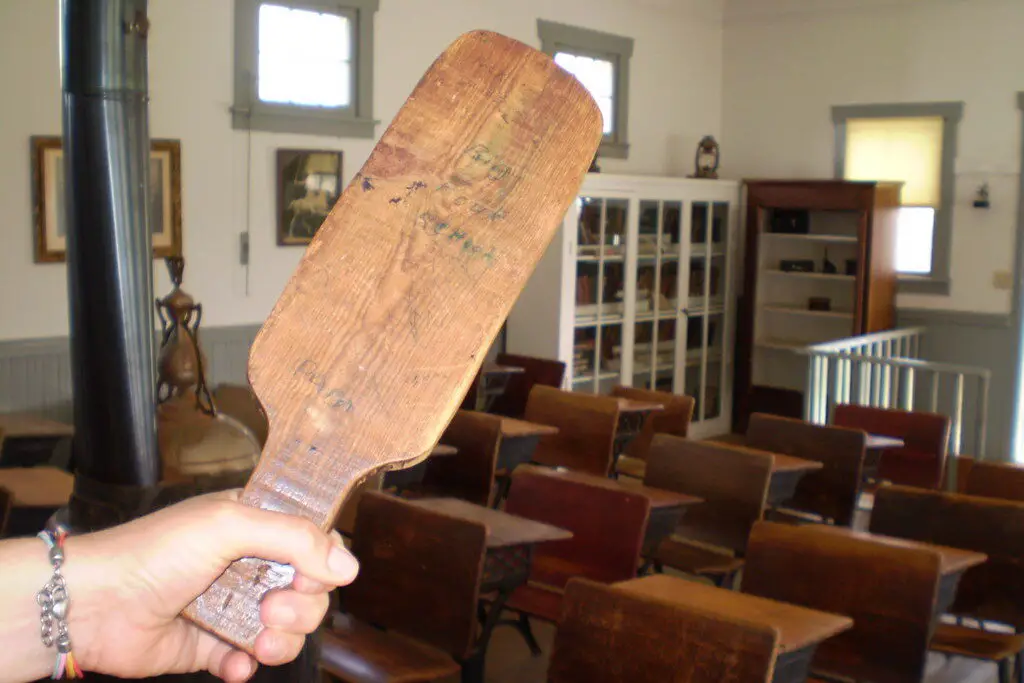
Believe it or not, corporal punishment was once a totally normal part of school discipline. Teachers had paddles—sometimes with holes drilled in them to make the impact worse—and they weren’t afraid to use them. If a kid talked back, forgot homework, or even got caught chewing gum, they could be sent to the principal’s office for a spanking. Some teachers would make kids bend over their desks in front of the whole class, turning punishment into public humiliation. Parents didn’t always object, either; many thought it was just how discipline worked. Kids grew up knowing that school wasn’t just a place for learning—it was a place where you could get physically punished for stepping out of line.
Thankfully, times have changed. While corporal punishment is still technically legal in some U.S. states, most schools have abandoned the practice entirely. Instead of hitting kids, schools now focus on detention, counseling, or other non-violent forms of discipline. Looking back, it’s shocking that adults thought hitting kids was a good way to teach respect. Studies have shown that corporal punishment does more harm than good, leading to fear and resentment rather than better behavior. It’s hard to imagine a modern classroom where a teacher could just grab a paddle and start swinging. These days, if a teacher even threatened to hit a student, they’d be out of a job instantly.
5. No Talking in the Hallways
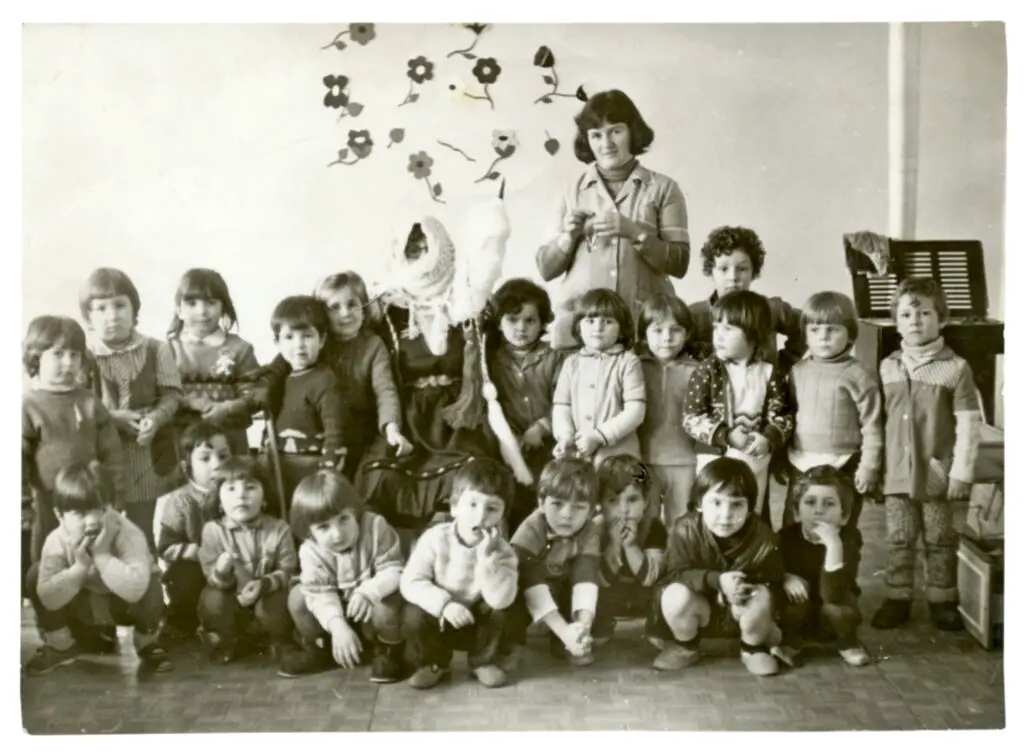
Back in the day, some schools had rules that banned students from talking while walking between classes. The idea was that silence in the hallways would keep order and prevent distractions. But let’s be real—kids are going to talk, especially after sitting in class for an hour. Enforcing this rule was nearly impossible, and teachers often ended up handing out detentions left and right. Some schools even had “hall monitors” to patrol the corridors and report any offenders. If you got caught chatting with a friend, you could lose recess or get sent to detention.
Eventually, schools realized that forcing silence in the hallways was unrealistic. Now, while excessive noise might get a teacher’s attention, kids are generally free to chat between classes. In fact, some educators encourage it, recognizing that social interaction helps students feel more engaged in school. Walking through a modern high school, you’ll hear laughter, conversations, and maybe even some music playing from a phone. It’s a far cry from the strict, silent halls of the past. The idea of punishing kids just for saying “hi” to a friend between classes seems over-the-top today. If anything, it just made school feel even more like a prison.
6. Hair Length Rules for Boys
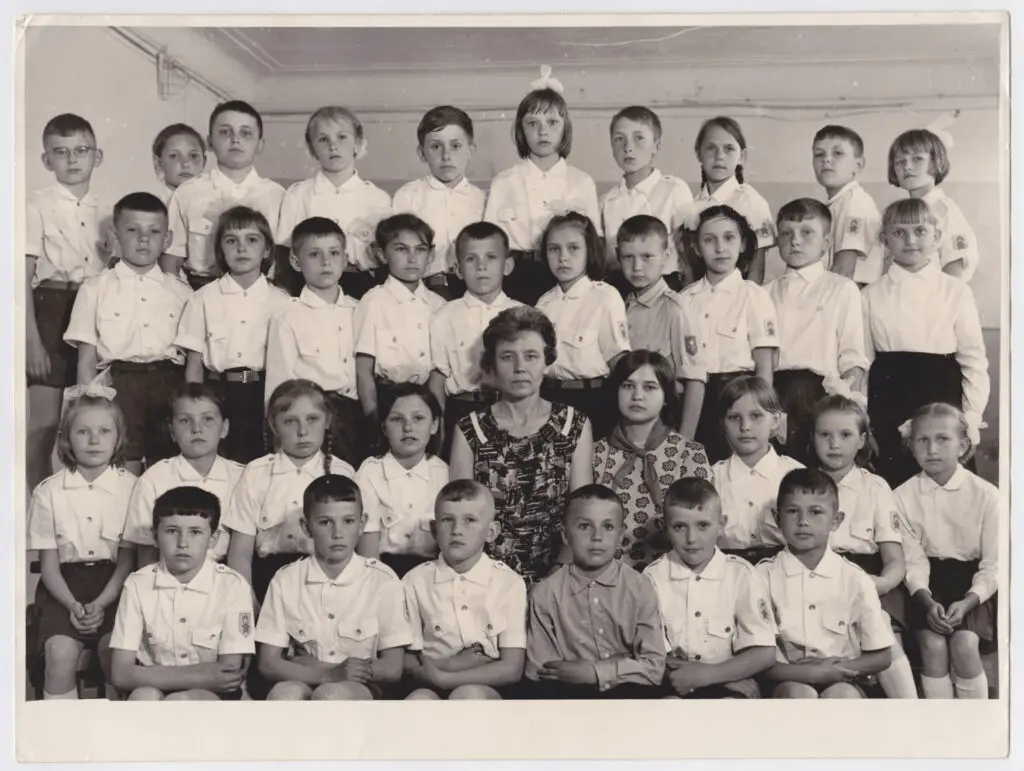
Believe it or not, some schools used to have strict rules about how long a boy’s hair could be. If your hair touched your ears or collar, you could be sent home or even suspended. Schools claimed long hair was “distracting” or “unprofessional,” but let’s be honest—it was mostly about outdated ideas of masculinity. Some boys had to get haircuts against their will just to be allowed in class. Others fought back, refusing to cut their hair and risking detention or even expulsion. It’s hard to imagine a school today telling a kid how short their hair has to be, but back then, it was a serious issue.
Things really heated up in the ‘60s and ‘70s when long hair became a symbol of rebellion. Rock stars and hippies made shaggy hair cool, and suddenly, boys everywhere wanted to grow theirs out. Some schools doubled down, forcing students to cut their hair or leave. Others eventually caved, realizing that policing hair length wasn’t worth the battle. Now, you can walk into any school and see boys with long hair, short hair, dyed hair, or even shaved heads, and no one cares. The idea of getting suspended just for growing your hair out seems completely absurd today.
7. Strict Bathroom Pass Rules

Back in the day, asking to go to the bathroom was a gamble. Some teachers had a strict “no bathroom during class” rule, no matter how badly you had to go. Others gave out limited passes—once you used them up, you were out of luck. If you had a teacher who didn’t believe in bathroom breaks, you had to hold it or face the embarrassment of begging. Some kids even had accidents because they weren’t allowed to leave. Schools treated bathroom breaks like a privilege instead of a basic human need, and the logic behind it was seriously flawed.
Thankfully, things have changed. Most schools now understand that kids shouldn’t have to choose between focusing on a lesson and running to the bathroom. While some teachers still limit breaks to prevent goofing off, students generally have more freedom to go when they need to. The thought of telling a kid they can’t use the restroom, even in an emergency, feels cruel today. It’s wild to think there was a time when something as simple as needing to pee could get you in trouble. No one should have to strategize when to drink water just to avoid an accident at school.
8. Forced Participation in the Pledge of Allegiance
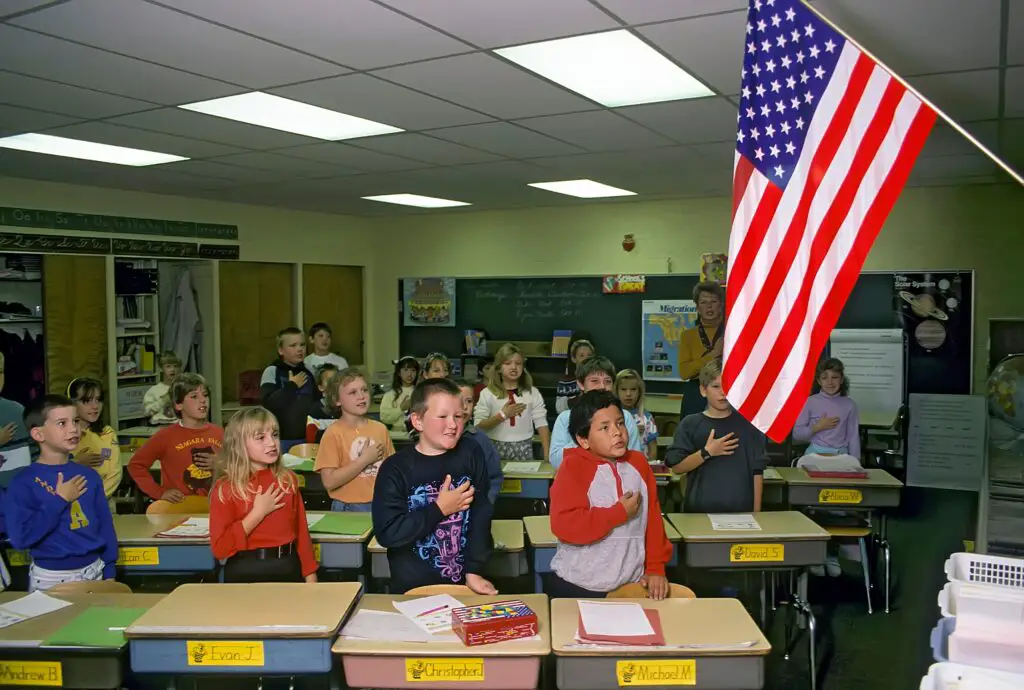
For years, students were required to stand, place their hand over their heart, and recite the Pledge of Allegiance every morning. If you refused, you could get detention, be sent to the principal’s office, or even face suspension. Some teachers saw it as a sign of disrespect, and students who didn’t stand were sometimes called out in front of the whole class. Many schools didn’t care about personal beliefs or religious objections—it was stand and say it, or else. The expectation was that every student would blindly follow along without question.
Things started shifting when students and parents pushed back, arguing that forced patriotism wasn’t true patriotism at all. Supreme Court rulings eventually made it clear that kids couldn’t be punished for opting out, but some schools still pressured students into doing it. Nowadays, while many students still stand for the pledge, it’s widely accepted that participation is a choice. The idea of forcing kids to recite something every morning against their will feels outdated and unnecessary. Respect should be earned, not demanded under threat of punishment.
9. Girls Couldn’t Take Shop Class, and Boys Couldn’t Take Home Ec

Back in the day, school subjects were heavily gendered. Boys took shop class, learning how to use power tools and fix cars. Girls took home economics, where they learned to sew, cook, and take care of a house. If a girl wanted to take shop or a boy wanted to take home ec, they were either denied or made to feel weird about it. Schools operated under the assumption that boys would become breadwinners and girls would be homemakers. It wasn’t just an unspoken expectation—it was an enforced rule in many places.
Over time, people realized that everyone benefits from knowing how to cook and how to fix things. By the ‘80s and ‘90s, these classes started to open up, and now, they’re often combined into general “life skills” courses. Today, it’s completely normal for a girl to be interested in carpentry or a boy to want to learn how to bake. The idea that someone’s education should be limited based on gender seems ridiculous now. Knowing how to use a power drill or cook a decent meal is useful for everyone.
10. Assigned Seating at Lunch

Some schools used to assign seating in the cafeteria, meaning you had no say in where or with whom you sat. If you didn’t like your tablemates, too bad. The goal was to prevent cliques and keep order, but in reality, it just made lunch miserable for a lot of kids. Imagine sitting next to people you had nothing in common with every single day, with no chance to switch. For kids who already struggled socially, assigned seating only made things worse. Some teachers even enforced alphabetical order, which meant your last name dictated your entire lunch experience.
Eventually, schools realized that forcing kids to sit in specific spots didn’t actually stop cliques—it just made lunch boring and frustrating. Now, outside of elementary schools where assigned seating sometimes still happens, kids can sit wherever they want. It’s such a simple freedom, but it makes a huge difference in how enjoyable lunch can be. No one wants to spend their break stuck in an awkward, forced seating arrangement. The whole idea of controlling where students sit at lunch feels unnecessary and outdated.
11. Getting Punished for Writing Notes

Before texting existed, passing notes was how kids secretly communicated during class. But if you got caught? Instant trouble. Some teachers would read the notes out loud to embarrass students. Others would confiscate them and threaten to call parents if the message was “inappropriate.” The fear of getting caught didn’t stop kids from doing it, though—it just made them get sneakier. Some kids folded notes into tiny, complicated shapes or had designated “drop spots” to exchange messages.
Now, note-passing has basically died out thanks to texting, and teachers have much bigger distractions to worry about. Phones are the new note-passing, and many schools focus on controlling screen time rather than intercepting little paper messages. Thinking back, it’s funny how big of a deal teachers made out of something so harmless. Sure, students were technically off-task, but it wasn’t the end of the world. If anything, some of those confiscated notes probably contained some of the juiciest school gossip.
12. Strict Single-File Lines in the Hallways

Some schools treated hallway movement like a military operation. Students had to walk in a perfect single-file line, sometimes with their hands behind their backs. Talking was often forbidden, and if you stepped out of place, you’d get in trouble. The goal was to keep order, but it just made school feel even more rigid and robotic. Some teachers even made kids “walk with purpose,” meaning no stopping, slowing down, or veering off course.
Nowadays, while younger students might still line up in elementary school, older kids are mostly free to walk as they please. Schools realized that expecting perfect lines in a crowded hallway was unrealistic. Walking in groups, chatting, or stopping at a friend’s locker is just part of school life now. Looking back, those strict hallway rules seem like a power trip more than anything. No one needs to march in a straight line just to get to math class.
13. No Water Bottles in Class

It sounds ridiculous now, but there was a time when bringing a water bottle to class was considered a distraction. Schools worried that students would play with them, spill water, or—get this—use them to sneak in soda or juice. Some teachers insisted that if kids really needed a drink, they could wait until passing periods or lunch. That meant if you got thirsty in the middle of class, your only option was to tough it out. If you had a strict teacher, even asking to go to the water fountain could get you a lecture about “learning to wait.”
Now, we know that hydration is important for focus and overall health. Schools have mostly embraced water bottles, and many even encourage students to carry them. Some classrooms even have water stations where kids can refill throughout the day. It’s wild to think that something as basic as drinking water was once treated as a privilege. The idea of punishing a kid for wanting to stay hydrated seems completely absurd today. If anything, most teachers now see water bottles as a non-issue—because, well, they are.
14. Automatic Failing Grades for One Late Assignment
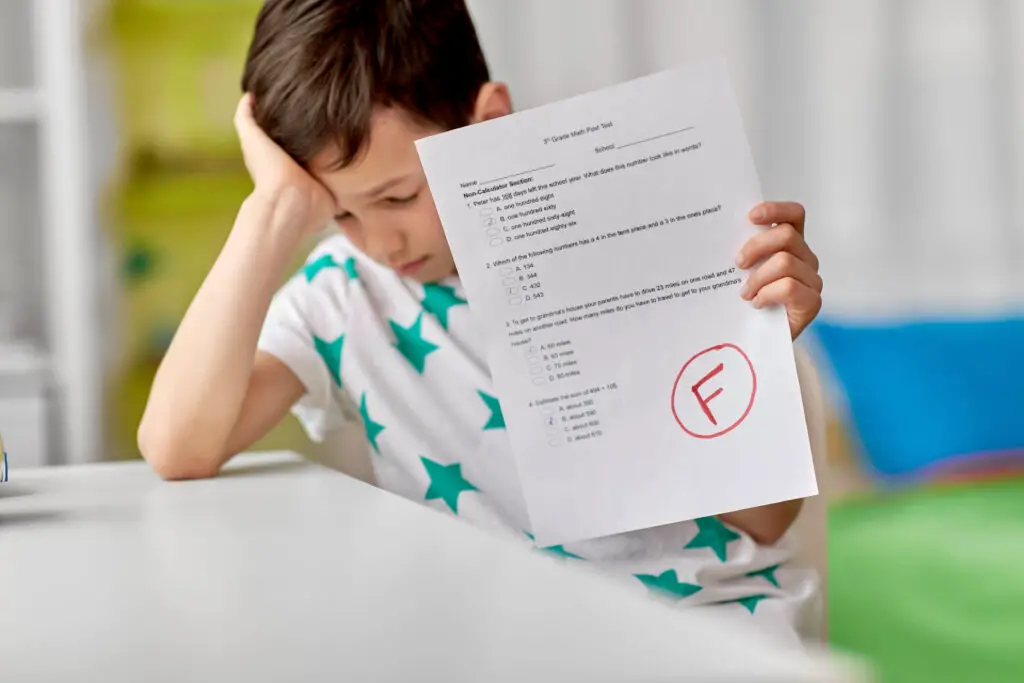
There was a time when turning in a single assignment late could tank your grade for an entire class. Some teachers had a strict “zero tolerance” policy—if it wasn’t on their desk when the bell rang, you got a zero. No excuses, no extensions, not even a slight deduction. It didn’t matter if you had a family emergency, got sick, or just genuinely forgot. Some teachers even went as far as refusing to accept late work at all, no matter how good the excuse. That meant one bad day could completely ruin your GPA.
Over time, schools realized that this approach wasn’t actually teaching responsibility—it was just setting kids up for failure. Now, most teachers have more flexible late work policies, allowing students to turn things in for partial credit. Some even prioritize effort and progress over rigid deadlines. The idea that a single missed deadline should determine a student’s entire grade seems extreme and unnecessary now. Deadlines still matter, of course, but there’s a lot more understanding that life happens. It’s one of those old-school policies that made things harder for no real reason.
